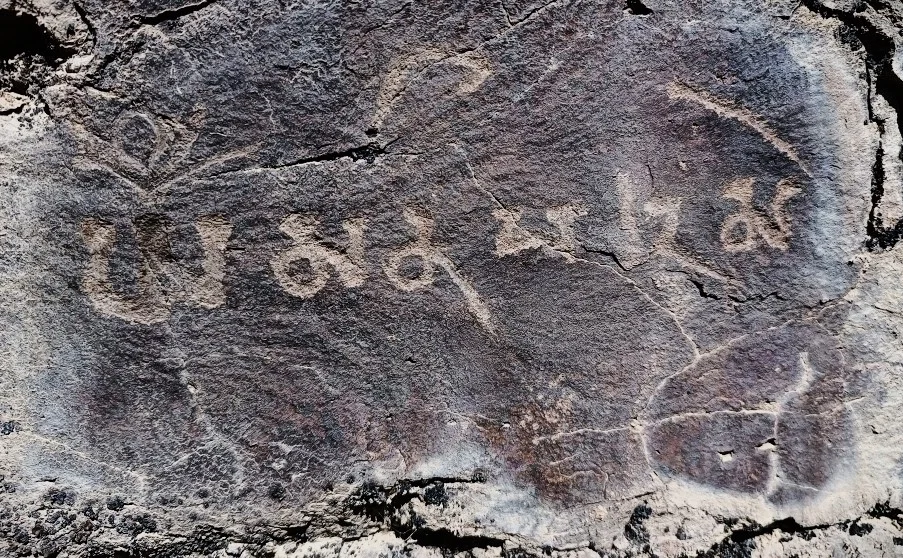As is well known, the road to a temple is difficult—not only in a metaphorical sense. To prevent pilgrims from losing their way to a remote mountain temple, Buddhist monks carved the inscription "Om Mani Padme Hum" and a special symbol on the rocks in the Taigaq Gorge of the Sholaqtau Mountains in Jetisu.
This is one of the most popular tourist routes in the Altyn-Emel State National Nature Park. The late medieval Buddhist inscriptions were first recorded in 1896 by N. N. Pantusov. Eight decades later, an examination of the gorge revealed 51 inscriptions of "Om Mani Padme Hum," which translates to " Oh, jewel shining in the lotus flower!"
For a long time, it was believed that the site with these inscriptions itself was an open-air temple. However, the discovery of similar petroglyphs by scientific volunteers from the "Petroglyph Hunter" team at the Ordaqol sanctuary in Jetisu, Sarybastau, Almaty Region, and other locations suggests that they are likely route markers, serving as signs pointing the way to a temple or monastery.

The working moment. Taigak/Olga Gumirova
The inscriptions in Taigaq have a unique feature: walking uphill through the gorge, certain slabs with inscriptions will catch your eye, while walking downhill reveals others. During a survey of this area in March 2024, Elena Udartseva, a member of the "Petroglyph Hunters" group, noticed a special symbol next to one of the inscriptions. This symbol is called the Triratna. Traditionally, the Triratna is depicted as a triple symbol: a trident (trishula) framed by a diamond branch (vajra), placed atop a chakra flower with a lotus blossom—the three jewels of Buddhist doctrine: Buddha, Dharma (law, teaching), and Sangha (monastic community). In this case, the Triratna is simplified—a symbolic trefoil with three dots is located in the lower left corner of the slab, and to the right is the inscription "Om Mani Padme Hum." The Triratna is a kind of "creed" for a Buddhist, and its depiction is no coincidence. This special sign likely indicates that a sacred site—a temple, Stupa, or monastic dwelling—is located nearby.
Indeed, after walking a little over a kilometer along the trail above which the slab is located, the volunteers discovered a previously undocumented ethnographic settlement consisting of four houses, one of which was very large and unusually shaped. In another direction, southeast of the cluster of inscriptions, in a dry ravine branching off from the Taigaq Gorge, another large ethnographic settlement was recorded. This settlement had a complex layout with a variety of rooms in different shapes and sizes. The height of the remaining walls varies from one to two meters, and it does not resemble the homesteads of livestock herders, which were all built according to more or less similar principles.

Petroglyph research/Olga Gumirova
It is possible that one or both of these settlements were modest Buddhist temples or monastic dwellings. Moreover, historical documents corroborate the presence of these types of structures in the region, providing additional evidence to support the discovery.

Om Mani Padme Hum/Olga Gumirova




